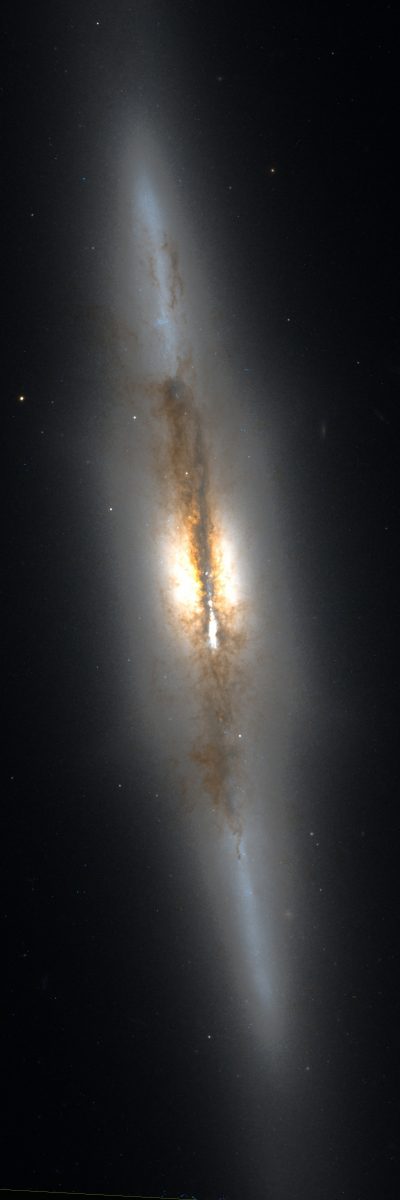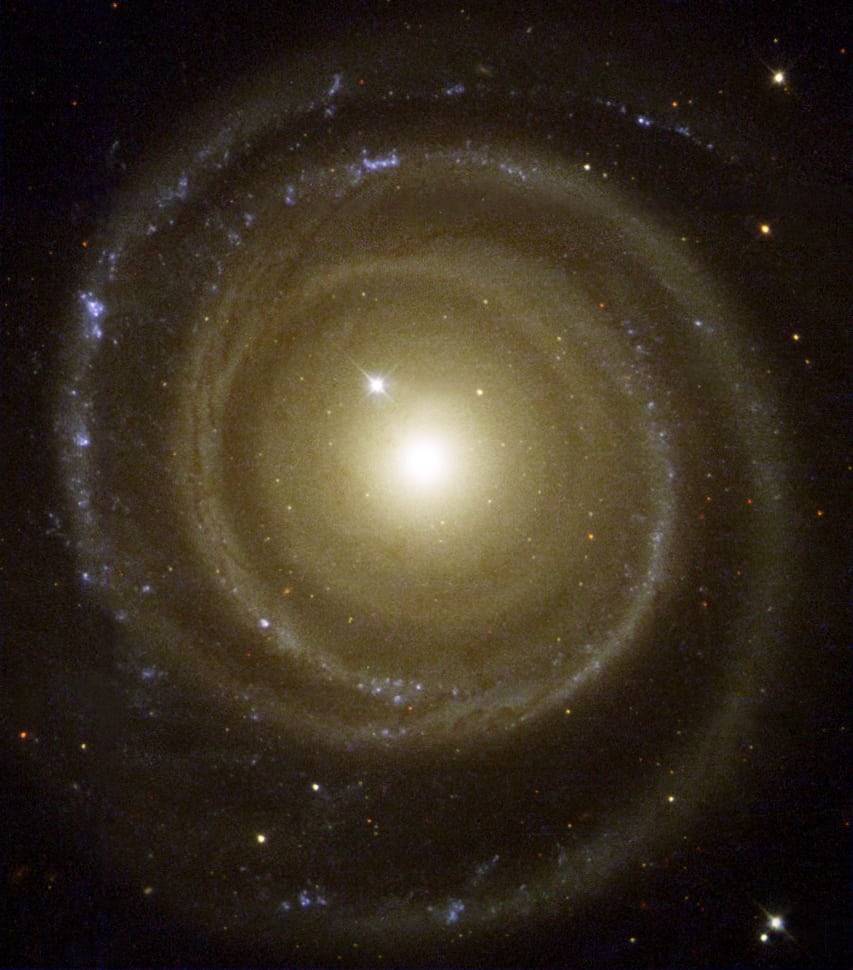Blog
World Music on Flamenco Fridays with Vicente Amigo
more...A study in contrasts, this colorful skyscape features stars, dust, and glowing gas in the vicinity of NGC 6914. The complex of reflection nebulae lies some 6,000 light-years away, toward the high-flying northern constellation Cygnus and the plane of our Milky Way Galaxy. Obscuring interstellar dust clouds appear in silhouette while reddish hydrogen emission nebulae, along with the dusty blue reflection nebulae, fill the cosmic canvas. Ultraviolet radiation from the massive, hot, young stars of the extensive Cygnus OB2 association ionize the region’s atomic hydrogen gas, producing the characteristic red glow as protons and electrons recombine. Embedded Cygnus OB2 stars also provide the blue starlight strongly reflected by the dust clouds. The nearly 1 degree wide telescopic field of view spans about 100 light-years at the estimated distance of NGC 6914.
more...John Douglas Surman (born 30 August 1944) is an English jazz saxophone, bass clarinet, and synthesizer player, and composer of free jazz and modal jazz, often using themes from folk music. He has composed and performed music for dance performances and film soundtracks.
Surman was born in Tavistock, Devon. He initially gained recognition playing baritone saxophone in the Mike Westbrook Band in the mid-1960s, and was soon heard regularly playing soprano saxophone and bass clarinet as well. His first playing issued on a record was with the Peter Lemer Quintet in 1966. After further recordings and performances with jazz bandleaders Mike Westbrook and Graham Collier and blues-rock musician Alexis Korner, he made the first record under his own name in 1968.
In 1969 he founded the well-regarded and influential group The Trio along with two expatriate American musicians, bassist Barre Phillips and drummer Stu Martin. In the mid-1970s he founded one of the earliest all-saxophone jazz groups, S.O.S., along with alto saxophonist Mike Osborne and tenor saxophonist Alan Skidmore. During this early period he also recorded with (among others) saxophonist Ronnie Scott, guitarist John McLaughlin, bandleader Michael Gibbs, trombonist Albert Mangelsdorff, and pianist Chris McGregor‘s Brotherhood of Breath.
https://www.youtube.com/watch?v=IqoTkfI2IWg
more...McKinley Howard “Kenny” Dorham (August 30, 1924 – December 5, 1972 Fairfield,TX) was an American jazz trumpeter, singer, and composer. Dorham’s talent is frequently lauded by critics and other musicians, but he never received the kind of attention or public recognition from the jazz establishment that many of his peers did. For this reason, writer Gary Giddins said that Dorham’s name has become “virtually synonymous with underrated.“Dorham also composed the jazz standard “Blue Bossa,” which first appeared on Joe Henderson‘s album Page One.
Dorham was one of the most active bebop trumpeters. He played in the big bands of Lionel Hampton, Billy Eckstine, Dizzy Gillespie, and Mercer Ellington and the quintet of Charlie Parker. He was a charter member of the original cooperative Jazz Messengers. He also recorded as a sideman with Thelonious Monk and Sonny Rollins, and he replaced Clifford Brown in the Max Roach Quintet after Brown’s death in 1956. In addition to sideman work, Dorham led his own groups, including the Jazz Prophets (formed shortly after Art Blakey took over the Jazz Messengers name). The Jazz Prophets, featuring a young Bobby Timmons on piano, bassist Sam Jones, and tenorman J. R. Monterose, with guest Kenny Burrell on guitar, recorded a live album ‘Round About Midnight at the Cafe Bohemia in 1956 for Blue Note.
In 1963 Dorham added the 26-year-old tenor saxophonist Joe Henderson to his group, which later recorded Una Mas (the group also featured a young Tony Williams). The friendship between the two musicians led to a number of other albums, such as Henderson’s Page One, Our Thing and In ‘n Out. Dorham recorded frequently throughout the 1960s for Blue Note and Prestige Records, as leader and as sideman for Henderson, Jackie McLean, Cedar Walton, Andrew Hill, Milt Jackson and others.
https://www.youtube.com/watch?v=HLBsjJmUFkU
more...NGC 4710 is an edge-on spiral galaxy in the constellation Coma Berenices. It’s prominent x-shaped structure reveals the existence of an underlying bar. 60 MLY away
Still an astrophysical mystery, the evolution of the bulges in spiral galaxies led astronomers to the edge-on galaxy NGC 4710. When staring directly at the centre of the galaxy, one can detect a faint, ethereal X-shaped structure. Such a feature, which astronomers call a boxy or peanut-shaped bulge, is due to the vertical motions of the stars in the galaxy’s bar and is only evident when the galaxy is seen edge-on. This curiously shaped puff is often observed in spiral galaxies with small bulges and open arms, but is less common in spirals with arms tightly wrapped around a more prominent bulge, such as NGC 4710.
more...Michael Joseph Jackson (August 29, 1958 – June 25, 2009) was an American singer, songwriter, and dancer. Dubbed the “King of Pop“, he was one of the most popular entertainers in the world, and was the best-selling music artist during the year of his death. Jackson’s contributions to music, dance, and fashion along with his publicized personal life made him a global figure in popular culture for over four decades.
The eighth child of the Jackson family, Michael made his professional debut in 1964 with his elder brothers Jackie, Tito, Jermaine, and Marlon as a member of the Jackson 5. He began his solo career in 1971 while at Motown Records. In the early 1980s, Jackson became a dominant figure in popular music. His music videos, including those of “Beat It“, “Billie Jean“, and “Thriller” from his 1982 album Thriller, are credited with breaking racial barriers and transforming the medium into an art form and promotional tool. The popularity of these videos helped bring the television channel MTV to fame. Jackson’s 1987 album Bad spawned the U.S. Billboard Hot 100 number-one singles “I Just Can’t Stop Loving You“, “Bad“, “The Way You Make Me Feel“, “Man in the Mirror“, and “Dirty Diana“, becoming the first album to have five number-one singles in the nation. He continued to innovate with videos such as “Black or White” and “Scream” throughout the 1990s, and forged a reputation as a touring solo artist. Through stage and video performances, Jackson popularized a number of complicated dance techniques, such as the robot and the moonwalk, to which he gave the name. His distinctive sound and style has influenced numerous artists of various music genres.
Michael Joseph Jackson was born in Gary, Indiana, a part of the Chicago metropolitan area, on August 29, 1958. He was the eighth of ten children in the Jackson family, a working-class African-American family living in a two-bedroom house on Jackson Street in Gary.
more...Dinah Washington (born Ruth Lee Jones; August 29, 1924 – December 14, 1963) was an American singer and pianist, who has been cited as “the most popular black female recording artist of the ’50s”. Primarily a jazz vocalist, she performed and recorded in a wide variety of styles including blues, R&B, and traditional pop music, and gave herself the title of “Queen of the Blues”. She was a 1986 inductee of the Alabama Jazz Hall of Fame, and was inducted into the Rock and Roll Hall of Fame in 1993.
Ruth Lee Jones was born in Tuscaloosa, Alabama to Alice Jones, and moved to Chicago as a child. She became deeply involved in gospel and played piano for the choir in St. Luke’s Baptist Church while still in elementary school. She sang gospel music in church and played piano, directing her church choir in her teens and being a member of the Sallie Martin Gospel Singers. She sang lead with the first female gospel singers formed by Ms. Martin, who was co-founder of the Gospel Singers Convention. Her involvement with the gospel choir occurred after she won an amateur contest at Chicago’s Regal Theater where she sang “I Can’t Face the Music”.
https://www.youtube.com/watch?v=B38IWIc4Gv8
more...Charles Parker Jr. (August 29, 1920 – March 12, 1955), also known as Yardbird and Bird, was an American jazz saxophonist and composer.
Parker was a highly influential jazz soloist and a leading figure in the development of bebop, a form of jazz characterized by fast tempos, virtuosic technique and advanced harmonies. Parker was a blazingly fast virtuoso, and he introduced revolutionary harmonic ideas including rapid passing chords, new variants of altered chords, and chord substitutions. His tone ranged from clean and penetrating to sweet and somber. Parker acquired the nickname “Yardbird” early in his career on the road with Jay McShann. This, and the shortened form “Bird”, continued to be used for the rest of his life, inspiring the titles of a number of Parker compositions, such as “Yardbird Suite“, “Ornithology“, “Bird Gets the Worm“, and “Bird of Paradise”. Parker was an icon for the hipster subculture and later the Beat Generation, personifying the jazz musician as an uncompromising artist and intellectual rather than just an entertainer.
Charles Parker Jr. was born in Kansas City, Kansas at 852 Freeman Avenue, and raised in Kansas City, Missouri near Westport and later – in high school – near 15th and Olive Street. He was the only child of Charles Parker and Adelaide “Addie” (Bailey), who was of mixed Choctaw and African American background. He attended Lincoln High School in September 1934, but withdrew in December 1935, just before joining the local musicians’ union and to pursue his musical career full time His childhood sweetheart and future wife, Rebecca Ruffin, graduated from Lincoln High School in June 1935.
https://www.youtube.com/watch?v=yxALc22a6ug
more...Bokanté features vocalist Malika Tirolien who sings in Guadeloupean Creole, along with musicians from 5 countries.
more...The boundary between the terrestrial atmosphere and the outer space, known as the Karman line, is located at an altitude of about 80 kilometers, which is 20 percent closer than previously thought. Although the new definition does not matter for launching rockets and spacecraft, it can clarify the legal debate in which the rules of space policy and commercial space flights will be established. Until now, it was believed that outer space is 100 kilometers above sea level. The Karman line name was given to the height by the name of the American scientist Theodor von Karman. He first determined that at about this distance from the surface the atmosphere becomes sparse, and aerodynamic aviation becomes impossible, since the speed of the aircraft, which is necessary to create a sufficient lift, exceeds the first space velocity. Therefore, to achieve high altitudes, it is already necessary to use the means of astronautics. But the traditional definition could not stand the evidence given by Jonathan McDowell, an astrophysicist at the Harvard-Smithsonian Center for Astrophysics in Cambridge, USA. As a hobby, McDowell is conducting a detailed account of the launch of the missiles. He often has to decide which launches qualify as the achievement of outer space and which do not, and the limit of 100 kilometers has never seemed right to him. He preferred mesopause, the coldest point in the Earth’s atmosphere, located at an altitude of about 85 kilometers. McDowell deemed it necessary to go deeper into the matter, knowing that companies such as Virgin Galactic and Blue Origin will soon begin offering tourist space flights.
more...Philip William Seamen (28 August 1926 – 13 October 1972, Lambeth) was an English jazz drummer.
With a background in big band music, Seamen played and recorded in a wide range of musical contexts with virtually every key figure of 1950s and 1960s British jazz. Notable examples included Joe Harriott, Tubby Hayes, Stan Tracey, Ronnie Scott, Dick Morrissey, Harold McNair, Don Rendell, Victor Feldman, Dizzy Reece, Tony Coe, Tony Lee, and George Chisholm, among others. Later in his career he worked with Alexis Korner and Georgie Fame, and had a spell with Ginger Baker’s Air Force, the leader of the band being Seamen’s foremost disciple. Addiction to alcohol and other drugs hampered his career.
Seamen began playing drums at the age of six, turning professional at the age of 18 by joining Nat Gonella and his Georgians in 1944. He joined the Tommy Sampson Orchestra in 1948, and by 1949, Seamen and tenor saxist Danny Moss had formed a bebop quintet from within the ranks and which was featured on a radio broadcast by the orchestra in September 1949.
more...Kenneth Sidney “Kenny” Drew (August 28, 1928 – August 4, 1993) was an American jazz pianist.
Drew was born in New York City in 1928 and received piano lessons from the age of five. He attended the High School of Music & Art in Manhattan. Drew’s first recording, in 1950, was with Howard McGhee, and over the next two years he worked in bands led by Buddy DeFranco, Coleman Hawkins, Lester Young, and Charlie Parker, among others. After a brief period with his own trio in California, Drew returned to New York, playing with Dinah Washington, Johnny Griffin, Buddy Rich, and several others over the following few years. He led many recording sessions throughout the ’50s, and in 1957 appeared on John Coltrane‘s album Blue Train.
https://www.youtube.com/watch?v=sisTQUzxruM
more...https://www.youtube.com/watch?v=xgniaJujhvo
more...NGC 4622 is a face-on unbarred spiral galaxy with a very prominent ring structure located in the constellation Centaurus. The galaxy is a member of the Centaurus Cluster.
The spiral galaxy, NGC 4622 (also called backward galaxy), lies approx. 111 million light years away from Earth in the constellation Centaurus. NGC 4622 is an example of a galaxy with leading spiral arms. In spiral galaxies, spiral arms were thought to trail; the tips of the spiral arms winding away from the center of the galaxy in the direction of the disks orbital rotation. In NGC 4622, however, the outer arms are leading spiral arms; the tips of the spiral arms point towards the direction of disk rotation. This may be the result of a gravitational interaction between NGC 4622 and another galaxy or the result of a merger between NGC 4622 and a smaller object.
NGC 4622 also has a single inner trailing spiral arm.Although it was originally suspected that the inner spiral arm was a leading arm, the observations that established that the outer arms were leading also established that the inner arm was trailing.
more...Alice Coltrane (née McLeod, August 27, 1937 – January 12, 2007), also known by her adopted Sanskrit name Turiyasangitananda or Turiya Alice Coltrane, was an American jazz musician and composer, and in her later years a swamini. One of the few harpists in the history of jazz, she recorded many albums as a bandleader, beginning in the late 1960s and early 1970s for Impulse! and other major record labels. She was the second wife of jazz saxophonist and composer John Coltrane.
In January 1966, Alice Coltrane replaced McCoy Tyner as pianist with John Coltrane’s group
more...More Posts
- Art Neville
- World Music with Mónika Lakatos
- Daily Roots with Scientist
- Surviving the Pandemic and Realizing Racial Justice
- The Cosmos with 1E 0657-558
- Robben Ford
- John Abercrombie
- Joe Farrell
- Johnny Hammond Smith
- Ludwig van Beethoven
- World Music with Daby Touré
- Daily Roots with Keith Hudson
- Surviving the Pandemic and Realizing Racial Justice
- The Cosmos with SDSS J225506.80+005839.9.
- Carmen Appice
- Eddie Palmieri
- Dannie Richmond
- Curtis Fuller
- Barry Harris
- World Music with Longital




